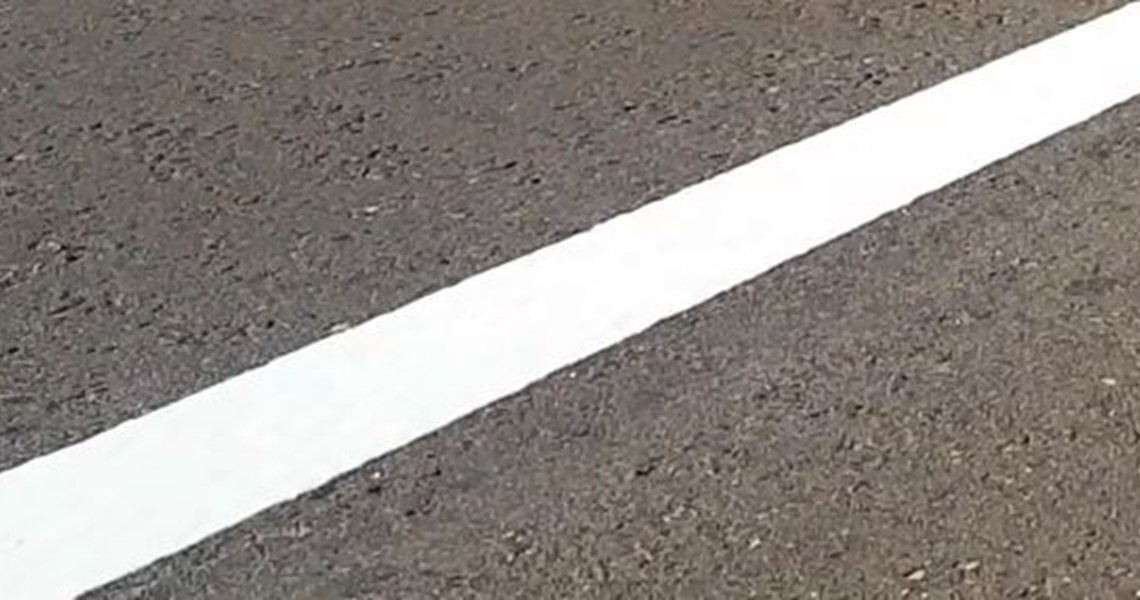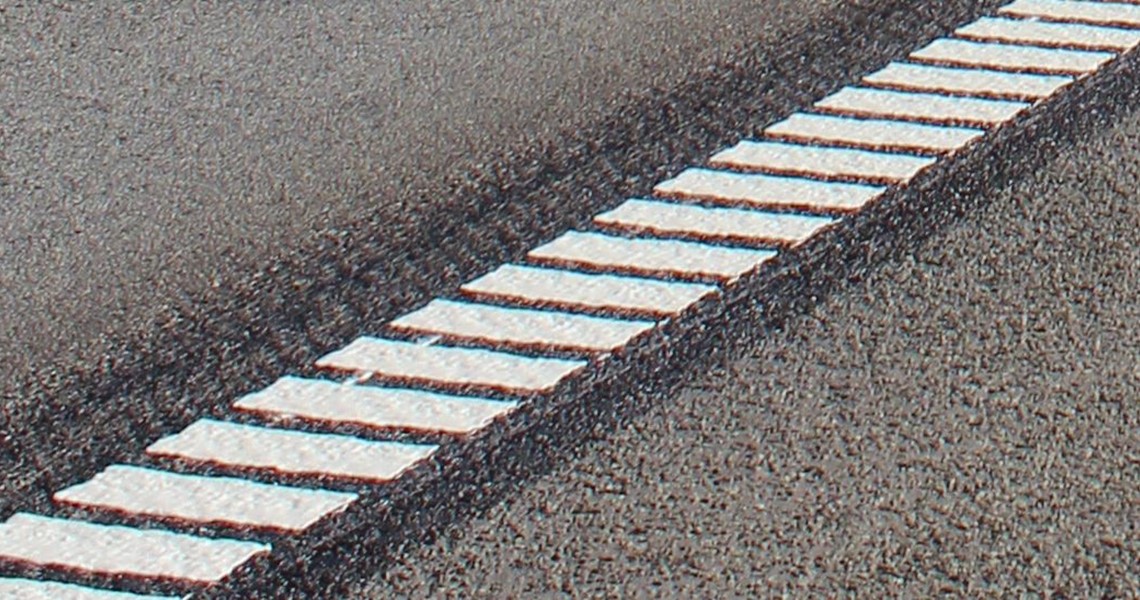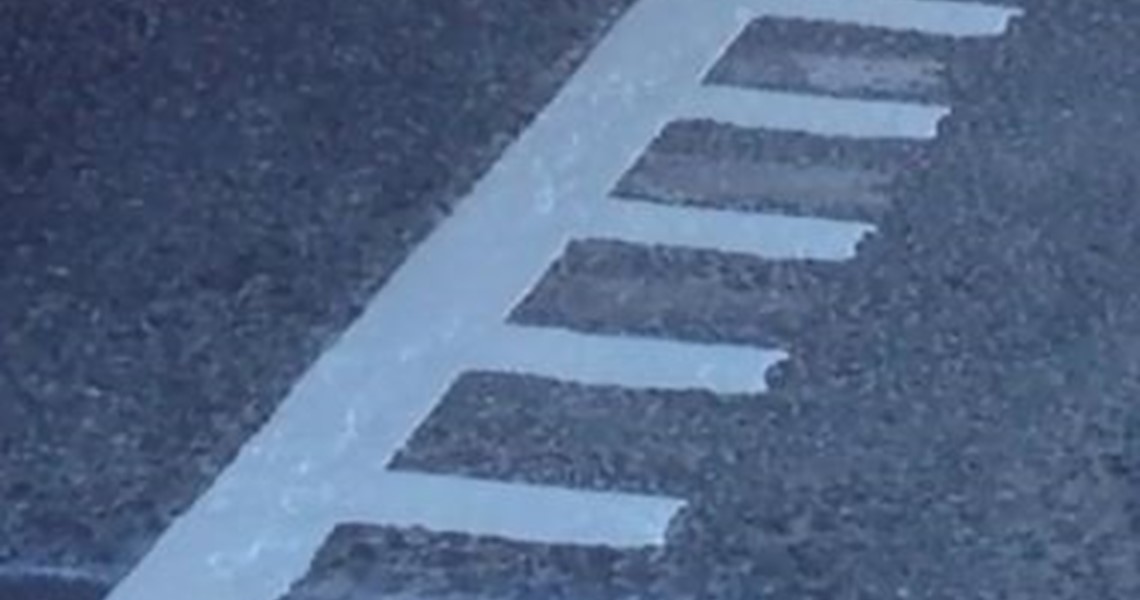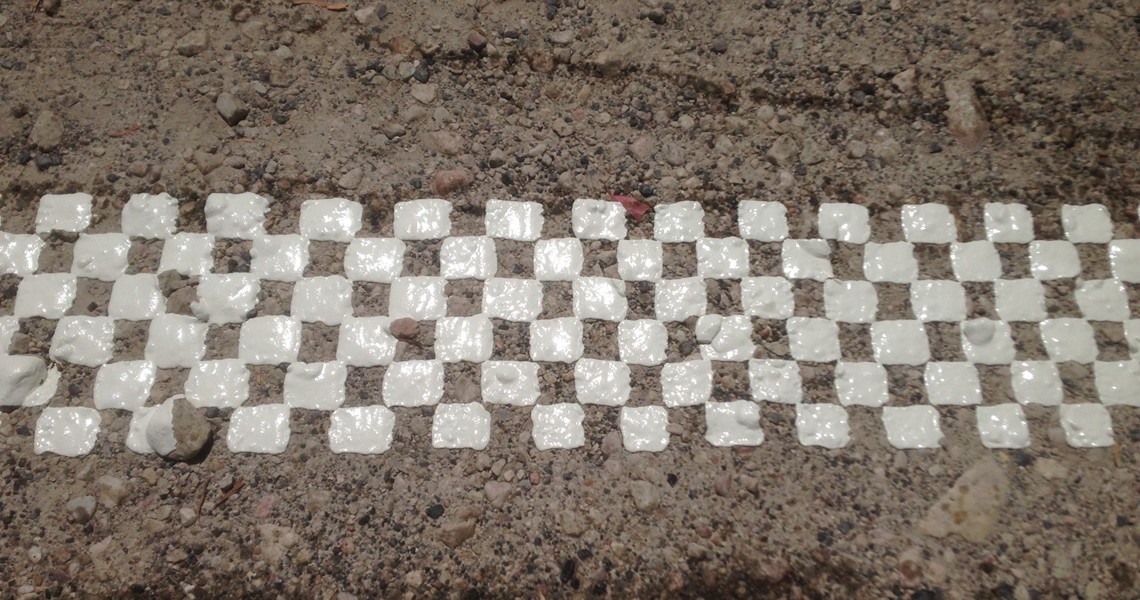Extrusion applications are used for applying both flat lines (also known as non-profiled or type 1 markings) and profiled markings (also known as structures or type 2 markings).
Profiled road markings are the newest road marking technology where a part of the road marking typology is raised over the road surface. This type of markings are becoming more and more popular because of the increased road safety it provides due to high visibility in wet conditions and at night, as well as the acoustic warning you get when driving on the line.
Based on the material you are using (thermoplastic or 2 component cold plastic), Borum extrusion equipment can apply different lines and types of markings.
Read more below.
Thermoplastic extruder equipment
Line types: Flat and profiled lines, profiled markings such as long flex, edge flex and chess markings
Equipment: Consists of an insulated screw pump that takes the heated material from the material tank to the extruder head
- The extruder head is available in 3 different sizes giving the max total width of the line: 30 cm, 40 cm or 50 cm
- The extruder head is fitted with a number of shutters for making lines as requested; standard shutters of 5 cm width (E.g. 6 shutters of 5 cm for the 30 cm head)
- Shutters of other sizes than the 5 cm are delivered by special orders.
- Depending on choice of head the extruder is capable of applying widths of 5 cm to 50 cm in width
- Multiple lines can be made simultaneously with the extruder (e.g. double lines)
- Line thickness is usually between 2-4 mm (ribs/profiles can be up to 10 mm, depending on material)
- Usual working speed is 2-10 km/h depending on the conditions, e.g. material, line type and operator experience
- Effective heating of all significant parts of the extruder ensures the material does not stiffen and set inside the equipment
- Continuous circulation of the material inside the extruder ensures a homogeneous viscosity and prevents settling of sand/glass beads
- Built-in pressure regulating system ensures uniform line width and thickness, even when making broken and solid lines at the same time
See videos and read more about the thermoplastic extruder here.
2 component cold plastic extruder 98:2
Line types: Flat and profiled lines (continuous and interrupted lines), ribs
- The equipment for 2-component extrusion consists of a pump unit for the paint and hardener, that ensures the 98:2 ratio, a mixer for blending the paint and the hardener, and pressure valves for controlling the flow.
- There is one extruder head for each specific line width. Available sizes are 10, 12, 15, 17, 20, 22, 24, 25, 30 cm
- Quick connectors to the mixer and to the lifting cylinder for quick and easy exchange of head
- Alarm from the LineMaster when hardener does not flow during marking work
- Alarm when there is a break in the marking works, which is longer than set in the LineMaster.
- Line thickness usually around 1-3 mm (ribs/profiles can be up to 10 mm, depending on material)
- Recommended material viscosity for flat line extrusion is > 6500 cp and for ribs > 8500 cp.
- Usual marking speed is between 2 - 6 km/h depending on the conditions, e.g. material, line type and operator experience
- The cleaning process is an automated preset sequence ensuring the correct valves are opening/closing. The system is activated via the Borum LineMaster computer.
- For all Borum spray machines, the equipment is mounted on a sliding retainer frame as standard that allows you to quickly slide the equipment from one side to another
- The sliding retainer frame can be used for all Borum 2-component equipment, which makes switching equipment easy and quick.
- Optional: Depending on the configuration, the system can handle working with both 2-component cold plastic and cold paint
See videos and read more about the 2-component extruder here.



